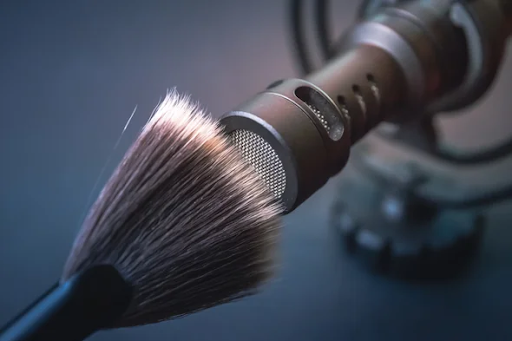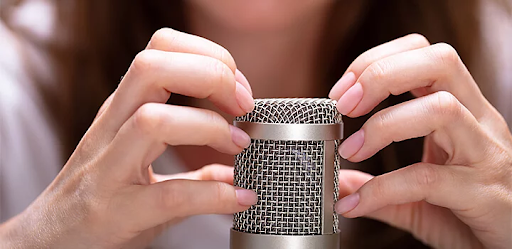
By Mikayla Walton, Head Copyeditor
Photos from Google
ASMR, also known as Autonomous Sensory Meridian Response, is a phenomenon that has caught on over the last few years with a more significant increase in the last year. ASMR is described as a tingling sensation that begins at the scalp and moves down the neck and upper spine. Audiences experience this response through auditory stimuli, while others do not feel the tingling sensation at all but rather experience a deep euphoria that makes them relaxed and tired.
The stimuli to these responses can be found on YouTube with many different types of videos. There are videos that include massage, eating, sand cutting, soap cutting, rain, soft music, etc. The popular forms of ASMR videos often include people whispering into microphones, tapping sounds, and repetitive phrases or sounds that release the cacophony of hormones that simulate intimacy. The types of ASMR are endless, but despite it sending many people into a state of deep relaxation and euphoria, ASMR does not have the best reputation. To better understand why this is, I asked a handful of trusted individuals in my life. The first person I asked was my English Professor, Jessica Campbell.
“I think it’s creepy, I just have a very visceral negative response to it myself,” Campbell said—which is not an uncommon reaction. There are individuals who find the sounds of ASMR aggravating. Another person who has such a strong response to it is my best friend of twelve years, Cheyanna Durant.
“I can’t exactly describe why, it just makes me angry. The whispering one-sided conversation just pisses me off,” Durant said. Whispering is meant to calm and soothe audiences but it often has the opposite effect, and for individuals who are like that, there are videos without talking. It seems her strong aggravated response to ASMR could be a disorder that is known as Mysophonia, the symptoms of which are having intense anger or discomfort that is triggered by certain sounds.
Despite the negative reputation ASMR carries, a large portion of the population does in fact find relaxation in it. My parents run a YouTube channel that specializes in white noise for sleep and before I asked them about ASMR, they had no idea that they were contributing to the community of listeners. “I just think sleep is important and white noise often helps people like me—who have anxiety—sleep better at night,” Danielle Hoffman, my mother, stated.
“Our views blew up last year with our ‘weightless’ black screen video. We’ve had many comments thanking us for fixing sleep schedules,” my dad, James, added. As an individual with bad anxiety, I can attest to the facts that ASMR aids in relaxation. I am a person that is constantly on the go, and relaxation is something hard for me to accomplish. Now, this is how most of our society functions.
In our society we are constantly on the move. We are living to work instead of working to live. We often do not have time to cook dinner so we pick it up, and are always in a rush to get home, relax in some sense, and then head straight to bed to do it all over the next day. ASMR is a quick fix to relaxation. When we cannot physically do something ourselves, or cannot figure out how to do something ourselves, we tend to turn to videos to aid ourselves. It should not be a surprise that we watch videos of others getting the relaxation we cannot and find it relaxing, and the added ‘intimacy’ of ASMR over a regular video or television program adds to that quick fix relaxation.
If you are in need of relaxation and haven’t been able to relax in some time, perhaps try an ASMR video and find the kind that is right for you. Put your phone away, dim the lights, and relax. Don’t let what others think of ASMR stop you from relaxing! It’s important for mental health to unwind every so often; treat yourself.


[…] Source by [author_name] […]
Interesting all around, Mikayla! I’ll have to check out your parents’ YouTube channel.
I came across the concept of ASMR around December 2019 and this was the best thing that has happened! These videos help to fall asleep on most nights after hectic days!